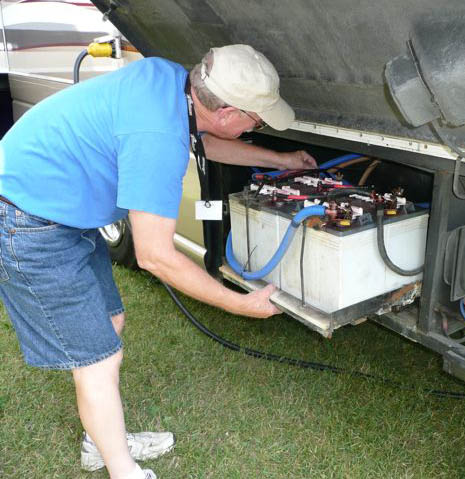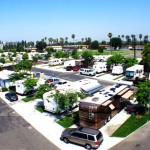What could be easier to use than a modern electrical system? You flip a switch and there is light. Push a button and your blender turns out a smoothie. But in your RV, it’s a different story. If you use the same amount of electricity in your rig that you do in your house, chances are your RV house battery will soon be like pancakes—flat. That’s because when you’re camping at the infield of a NASCAR event, attending a Samboree or chapter gathering at a fairgrounds, or tailgating at the Super Bowl, you are using up the finite stored electricity in your house batteries.
There are two ways to deal with an RV’s limited electrical power. One is to cut back on usage (conservation), and the other is to find additional sources of electricity, like a generator, solar panels, wind turbines or chipmunks on a treadmill.
The easiest way to extend your electrical power is to conserve the energy you already have in your batteries to use in more efficient ways.
- Turn off anything that pulls electricity from your battery—lights, radio, TV, computer – when not in use.
- Coordinate your generator running time to when you are using power-hungry appliances. Schedule showers (your water pump uses 8 amps), water heater, microwave, coffee grinder, and dishwashing all within the same period of time when you can run your generator to power them, rather than pull juice out of your batteries. This will also replace a few amps to your house batteries at the same time.
- Rise and go to bed with the sun, cutting your light usage down considerably. Florescent lights use about 1 amp each, but LED lights are more energy stingy and will last the life of your rig.
- If you read in bed, use a book light with rechargeable batteries. You won’t run down your house batteries with your RV’s lights, and you will probably win points from your trying-to-sleep mate by not lighting up the whole bedroom. Recharge the batteries when you hook up next time. Or plug the battery charger into your tow vehicle or dingy cigarette lighter and charge the batteries when on exploration or re-supplying trips.
- Forget your forced air furnace except when running your generator. It sucks the juice out of your batteries big time and will discharge it in one night if left on thermostat. Pull up an extra blanket or install a propane heater (no electricity needed). Turn your generator on in the morning to run your forced air furnace to get rid of the morning chill and make your coffee.
- Monitor your house batteries with a voltage meter so you don’t run them down too low. Deep cycle batteries are fully charged at 12.6 volts and completely discharged at 10.6 volts. Recharge before they get below 12.0 volts.
Your batteries are responsible for getting you from point A to point B and for ensuring all your amenities have their power needs met. Problems do occur, and a safe way to keep your rig in the clear is with a comprehensive Good Sam Roadside Assistance plan that covers battery recharges or battery replacement if you drain your power supply beyond recharging or if it no longer holds a charge.




Bob Difley
I’ve used a Double Reflective Polyethylene Insulation Roll available in building supply stores. It is a layer of air sandwiched between two reflective layers. I cut the pieces to fit and use them in West facing windows and windshield. They keep the inside much cooler. Leave windows open on the sides not facing the sun for air circulation. When not needed, roll up and stow.
Edward Hass
Solar ! We use a 160 watt portable and minimize using gen for the big item draws
Edward Hass
What say you on using the popular Silver Insulating Window Panels Summer ti keep out sun heat and Winter to keep heat in ?